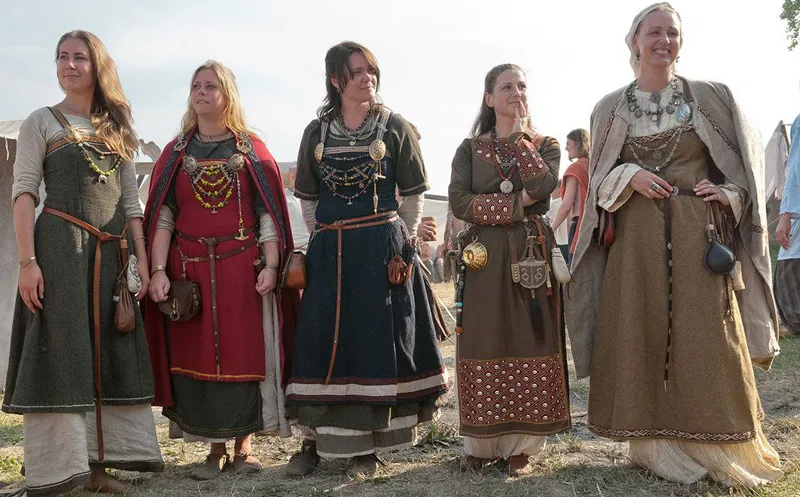The answer to this question is somewhat complicated, as the Norse people of Scandinavia (modern-day Denmark, Norway, and Sweden) were not a unified culture with a single style of dress. Instead, clothing varied depending on the region, the season, and the person’s occupation.
For example, in colder climates like Norway, people would wear heavier woolen garments in the winter, while in warmer regions like Denmark they might opt for lighter linen clothes. Wealthier individuals could afford finer materials and elaborate embellishments on their clothing, while poorer people had to make do with whatever was available.
Overall though, some common features of Viking clothing included tunics (worn by both men and women), trousers (usually reserved for men), cloaks or shawls (to keep warm), and belts. Footwear varied depending on the activity being undertaken – sturdy boots for traveling or working outside, for instance – but soft leather shoes were also popular.
Jewelry was also an important part of Viking dress, particularly for women. Rings, brooches, necklaces, and other adornments were often made from precious metals like gold or silver and adorned with colorful gemstones.
Viking clothes were made of wool, linen, and animal skins. They wore tunics and cloaks. Viking men also wore pants. Viking women wore long dresses with belts. Both men and women wore boots and shoes.
What do Vikings wear – boots
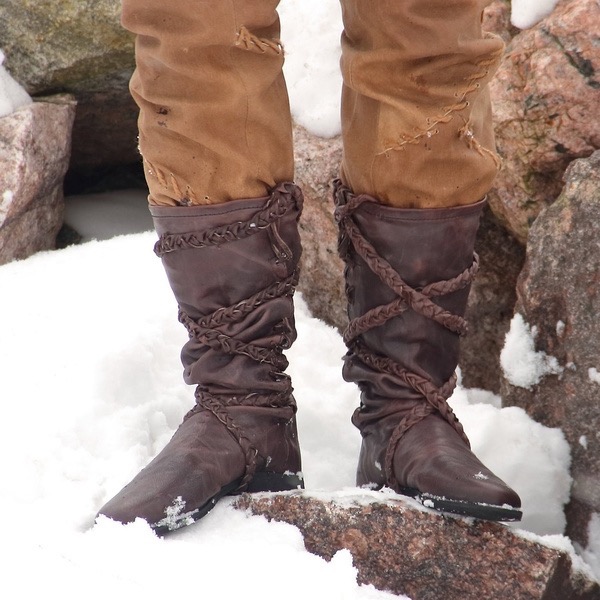
Viking footwear was often made from thick, sturdy leather that could withstand the harsh conditions of the Scandinavian climate. The boots were usually knee-length or longer, and were often lined with fur to keep the feet warm. Viking shoes were often decorated with intricate designs, and some even had metal toe caps for extra protection.
What do Vikings wear – shoes
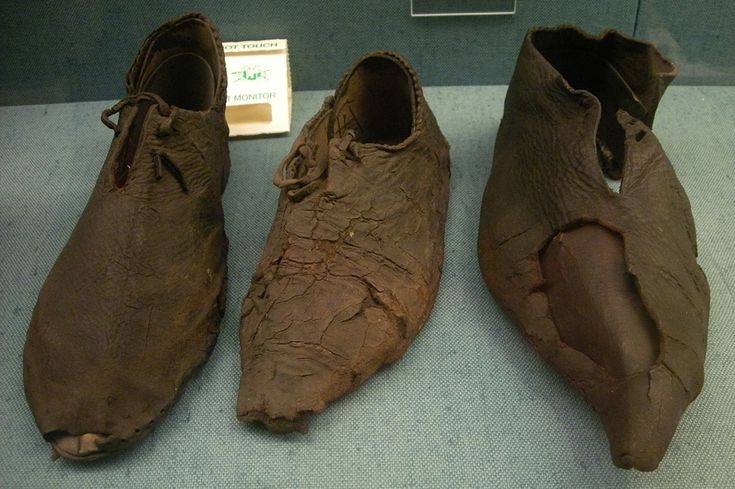
When it comes to footwear, the Vikings were a practical people. They wore shoes that were easy to take on and off, since they often had to wade through water or snow. The most common type of shoe worn by the Vikings was the brogue – a simple, sturdy shoe with a low heel and laces or buckles.
Viking footwear was typically made of leather and fur, and was often decorated with designs. Viking shoes were usually soft-soled, making them ideal for walking in snow or wet conditions. The most common type of shoe worn by Vikings was the brogue, a sturdy, lace-up shoe that was often embellished with metal decorations.
What do Vikings wear – cap
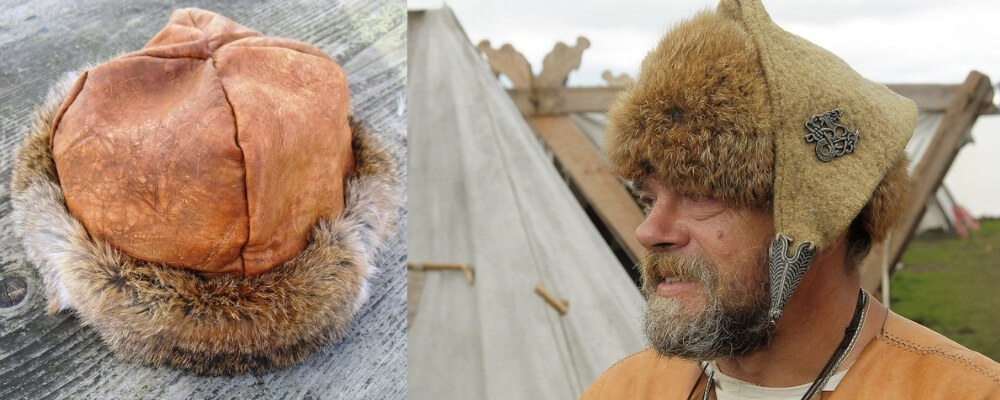
The typical Viking wore a cap and head-cover to protect himself from the cold weather. The most common type of head-cover was a fur cap, which was made from the skin of a reindeer or other animal.
What do Vikings wear – belt

A belt was an important part of a Viking’s wardrobe. It was used to secure their tunic or dress at the waist. A belt could also be used to carry a weapon or tools.
Vikings are known for their love of fine craftsmanship, and their belts are no exception. Many Vikings choose to adorn their belts with intricate designs and patterns, often incorporating Norse symbols and mythology into the design. Viking belts are usually made from high quality leather, and some even feature metal buckles and clasps.
A Viking belt is not just a fashion statement – it is also a practical tool. A belt can be used to hold a variety of weapons and tools, including knives, axes, and even shields. It is not uncommon for a Viking warrior to strap his shield to his back using his belt when going into battle. In addition to being a functional piece of equipment, a belt also served as a status symbol among Viking men. The more ornate and expensive a belt was, the higher social status it indicated.
What do Vikings wear – bracer
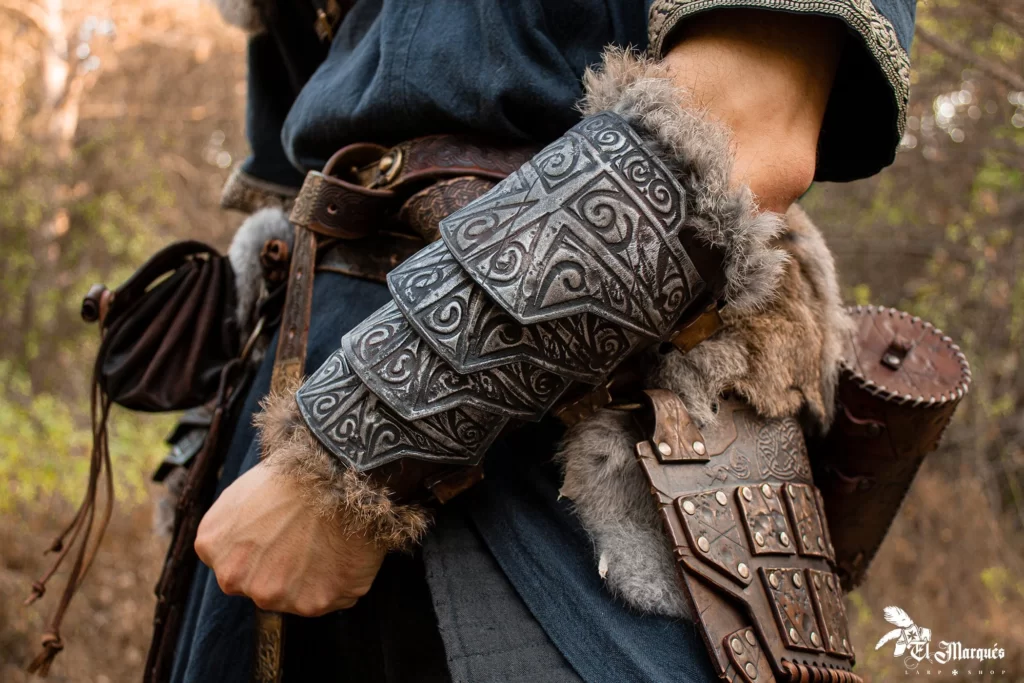
Vikings were well-known for their intricate and beautiful jewelry, and their bracers were no exception. Made from a variety of materials including bone, wood, metal, and even ivory, these armlets were both functional and stylish. While some bracers were simply ornamental, others served a more practical purpose, like protecting the wearer’s arm in battle. No matter their function, Vikings’ bracers always made a statement.
Viking bracers were often made of metal, but could also be made of other materials like leather. They were usually decorated with intricate designs and were worn on the forearm.
What do Vikings wear – jewellry
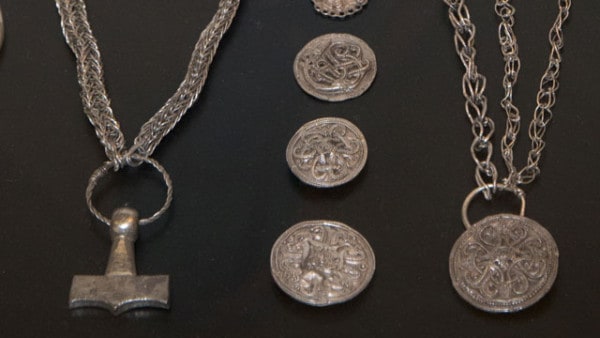
The Vikings were a fierce and warlike people, and their jewelry reflected this. They wore necklaces and bracelets made of animal bones and teeth, as well as beads made from wood, amber, and other materials. Their rings were often made of iron, and they also wore armor-piercing brooches on their clothing.
Viking jewellery was often made from bronze, iron, or silver, and was often decorated with geometric designs or images of animals. Vikings also wore a lot of amulets, which were thought to protect them from harm. One of the most popular amulets was the Mjölnir, which was the hammer of the god Thor.
What do Vikings wear – helmet
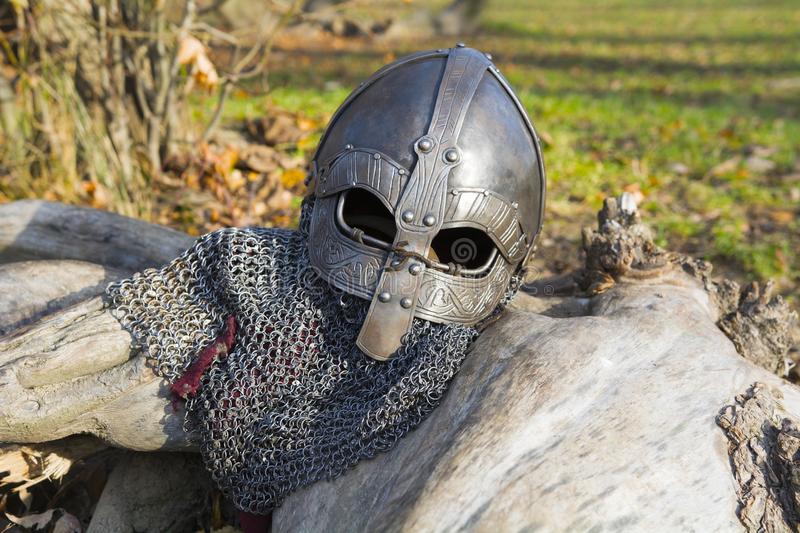
It is a common misconception that Vikings only wore horned helmets. In reality, most Vikings did not wear horns on their helmets and the ones that did were more likely used for ceremonial purposes than during battle.
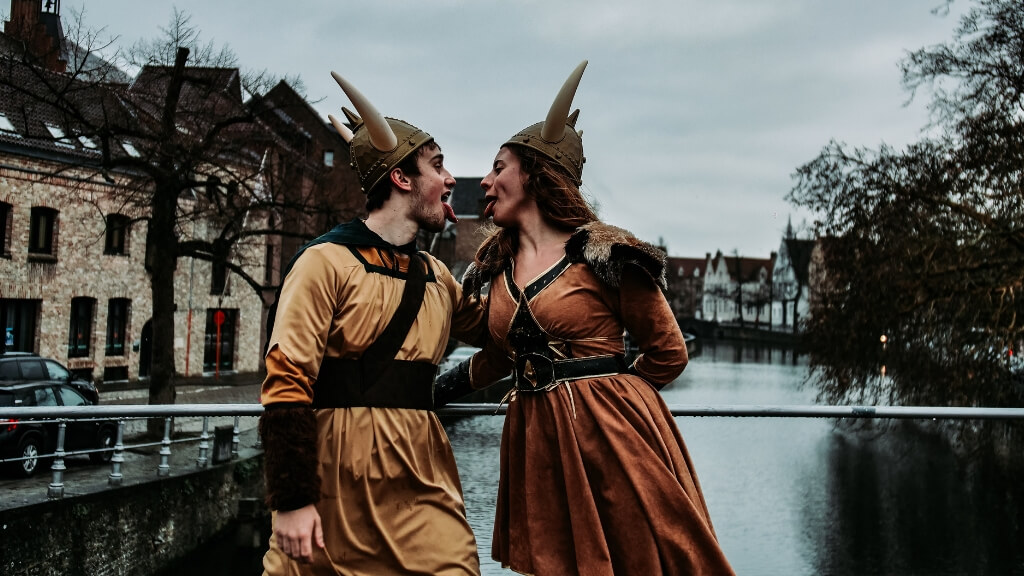
Viking clothing was made mostly from wool, linen, and animal skins. Wool was used to make tunics, trousers, and cloaks while linen was used for shirts, undershirts, and skirts. Animal skins were used for boots, gloves, belts, and other various accessories. The furs of animals were also used to line cloaks and other garments to keep the wearer warm.
Viking clothing was typically very practical and comfortable. It had to be able to withstand all kinds of weather conditions since the Vikings travelled so much. Their clothes were also easy to repair which was important since they didn’t have access to sewing machines.
Although we don’t know exactly what every Viking looked like, we do know that they were a very stylish people! They liked to decorate their clothes with intricate patterns and bright colors. Jewelry was also popular among the Viking people. Both men and women wore necklaces, rings, brooches, and arm rings made from gold, silver, bronze, or iron.

When most people think of Vikings, they picture a burly man with a long beard wearing a horned helmet and armor. While this is certainly one type of Viking attire, it is not the only type. In reality, Vikings wore many different types of clothing depending on their occupation, climate, and social status. Even within the same family, you might find members who dress very differently from one another.
